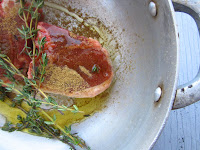Developed and mastered over many years in Northern Italy,
pesto has very humble beginnings and today it’s an unknown super food snack
eaten everywhere. I did some digging into what made pesto, pesto and what it
was that made it so healthy. The primary ingredient basil is an antioxidant and
is used to treat stress the Eastern world. Olive oil is a good fat, known to
reduce cholesterol levels in the blood and for skincare, all over the world. Pine
nuts contain vitamins A, C and D and fight free radicals in the body,
preventing long term illness. They are also high in protein and magnesium. Garlic
is known for reducing blood pressure and protecting the heart. The health
benefits of these ingredients are endless, and make pesto that much better!
I have done a basic pesto blend here, but tastes and diets
are always so varied, so I have included a table with some popular alternatives.
All alternatives have been taken from historical and modern dietary recipes. You
can use pesto with pasta, meats and salads – whatever you need really.
Sauces and dips are best
Ingredients
Serves four
2 bunches basil
2 cloves of garlic
¼ cup pine nuts
¼ cup walnuts
½ cup parmesan cheese
½ cup extra virgin olive oil
2 tbsp lemon juice
Salt and pepper to taste
Directions
There are secrets to ignite huge
flavors in a pesto. The first is to start by blanching your basil leaves in
salted water. Do so by pouring boiling water through basil in a colander, then
shocking into ice cold water. This helps the basil retain its freshness. You
can use either a pulse blender or a mortar pestle. Start by pulsing your basil,
follow by adding half the olive oil. The second secret to a great pesto is to
toast your nuts slightly, to bring out the warmth and depth in flavour. Add to
the blender with garlic and cheese and pulse again. Finish by stirring through
lemon, salt and pepper to taste. You may need to add the remaining olive oil. Be
sure to use good olive oil for taste.














